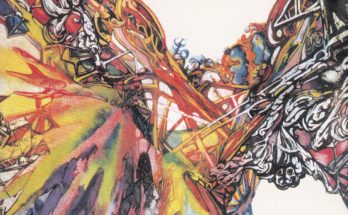By Rodrigo Díaz Guerrero
Condemned to immobility, toys require human intervention to become the protagonists of incredible adventures and intricate tragedies. They are heroes, villains, fetishes: objects of projection in fantastic worlds that unfold reality. Inmovilidad (Ediciones Periféricas, 2022), is the latest book published by Alejandro Paniagua Anguiano, a book of stories where the toy is the recurring element in a collection of stories that oscillate, vertiginously, between multicolored atmospheres and tenebrous landscapes. I talked with the author about his work, which will be presented this Saturday, June 4 at El Sindicato, in a pleasant chat that we share with you here:
RDG – Personally, I believe that the craft of writing many times attends to some impression that arises from our daily life—some event, phenomenon, hypothesis—that serves as raw material in the elaboration of a literary concept. How and why was the toy chosen for the construction of a work like Inmovilidad? Is it the metaphor of a theme that you personally had to deal with?
APA – When I was a child—in Tonalá, Jalisco—my parents bought me a traditional toy, one of those wooden ladders in which you put a little monkey that goes down as it goes down each step. I started to play happily with the device. Suddenly, I noticed that in the restaurant across the street, a carpenter had set up a ladder to fix the sign. I had my dummy climb the ladder rungs and, just then, the man climbed up too. I left the dummy at the top for a few moments and the man stayed up for the same amount of time. When I let go of my figure, the human also descended. I stayed that way for several minutes, in sync with the guy. I thought that my actions directly affected reality. Then I had a sinister idea, it occurred to me to make my humanoid fall from the stairs; immediately, the carpenter also collapsed, he let out a scream even from the blow on his back. I concluded that my toy was cursed, that it was an ominous object and that I, together with that demonic mechanism, had caused the accident. With time I understood, of course, that it was just a coincidence; but I always remained with a certain conviction that toys are perhaps magical objects, with paranormal capabilities, with an unknown, disturbing inner world. Hence my obsession with toys, which to this day I continue to collect and try to understand.

RDG – According to Donald W. Winnicott, children create transitional objects, which occupy a space that represents «a safe place» (blankets, stuffed animals, toys…), and at the same time, they build «bridges» to reality, to «the others», gradually inserting the child in the world around him, making the object in question, something valuable and irreplaceable. In the characters of Inmovilidad, what does the toy represent? Is it the evidence of a lost purity? Is it that «safe place» that we long for when we face fear, anguish?
APA – In our games and toys, the best of us is manifested: the compassion that drives us to save a person in danger, our desire to defeat the wicked and punish their villainy, our courage to overcome tribulations, etc. But our games also show the worst in us: our impulse to tear others to pieces, to go at full speed in a car and crash into a wall, our desire to commit unspeakable sexual acts, the fears that will not allow us to fulfill our desires or that will keep us immobile for decades. The game is the rehearsal of our future vices and virtues. That is how important, how decisive toys are. For the characters in my book, toys are a sign that a larger, more unpredictable and random force also manipulates us, also plays with our destiny.
RDG – E. L. Doctorow said that fiction fosters the concept of community and «distributes suffering». What does Alejandro Paniagua think fiction is for?
APA – Fiction serves to transfigure, to disfigure reality, to alter time, space, matter in a concrete way. Let me explain, I am a Buddhist and I believe that all those stories (about wrathful deities, enlightened beings and dharma masters who have the ability to walk through walls, fly or guess the future), in short, all those fictions have revolutionized my world, have allowed me to understand that what is possible is broader than I thought, that reality is more malleable than we suspect. Fiction has something sacred about it; so much so that many fictions end up becoming ideologies, religions, works of art, healing mechanisms or literature.




